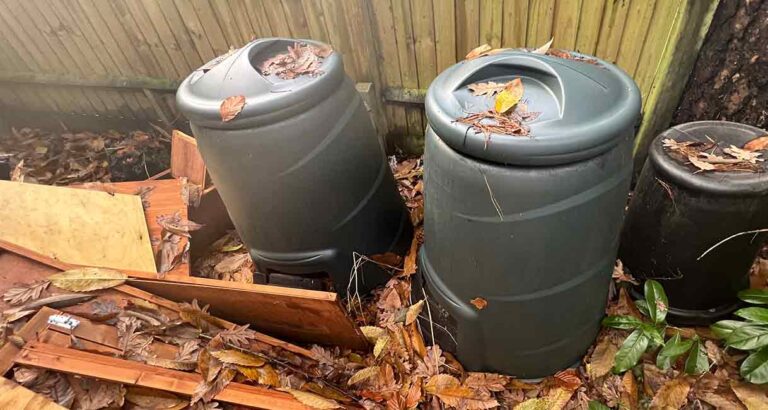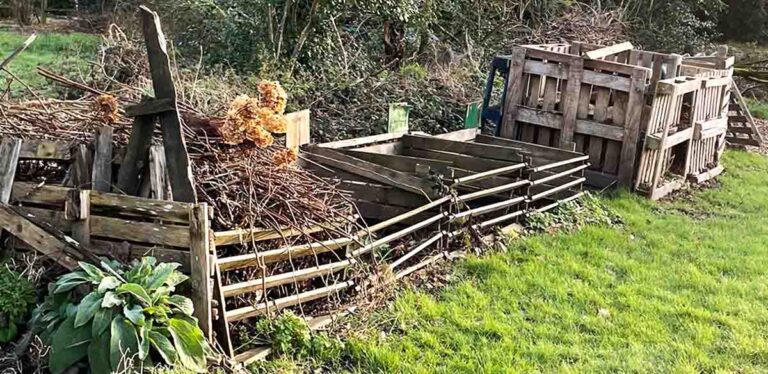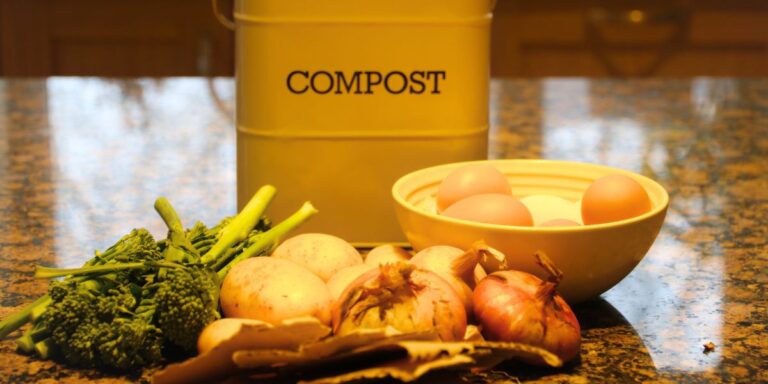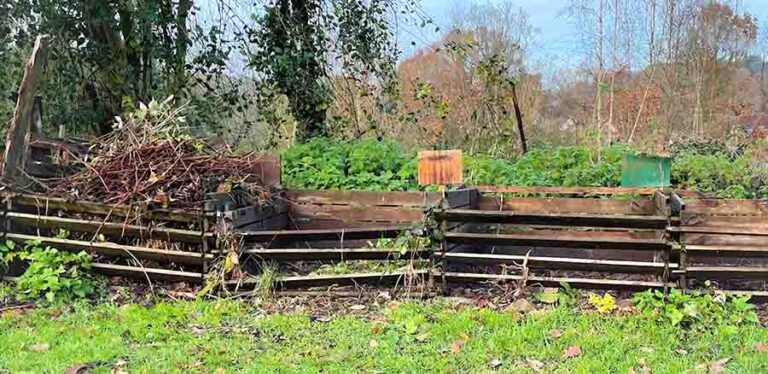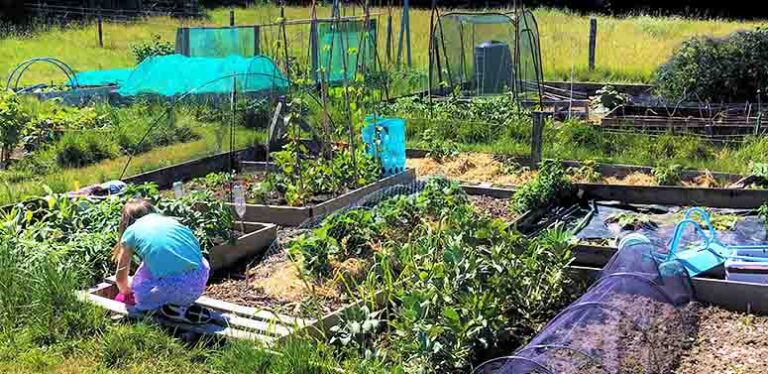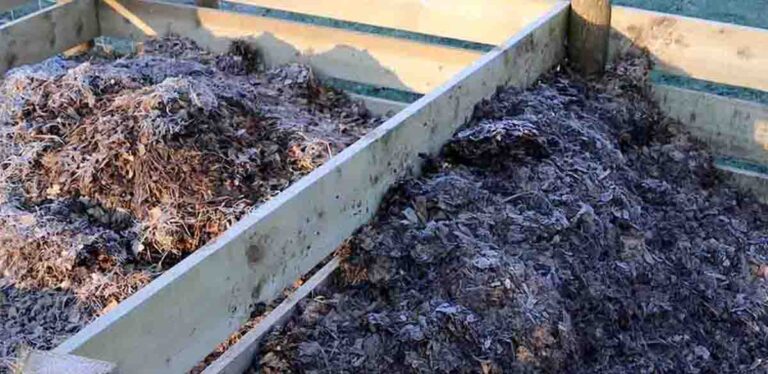Why Is My Compost Pile Not Breaking Down
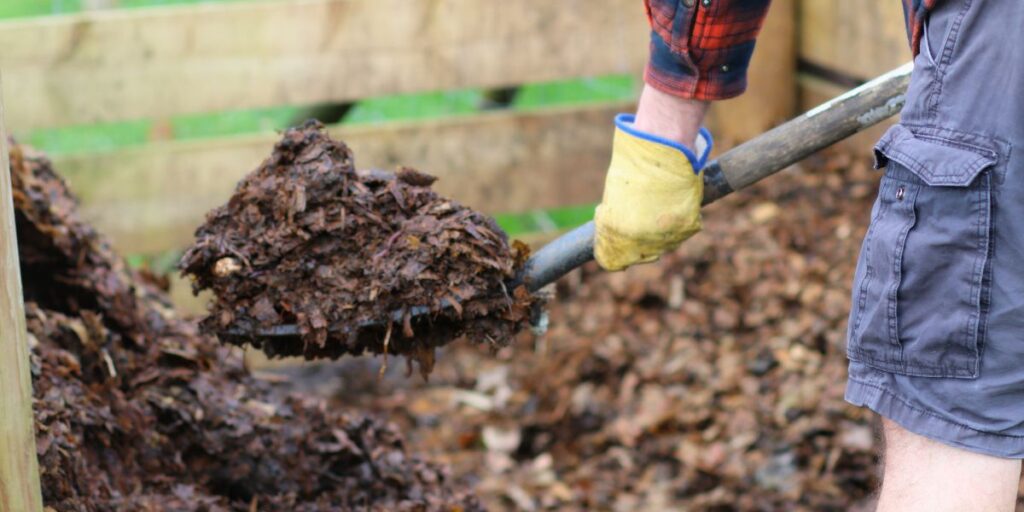
Your compost pile is just sitting there. Doing nothing. A big heap of all the things you added to it, looking exactly the same as they did the day you dumped them on the pile. You on the other hand are trying to do your bit for the planet. So why isn’t your compost pile breaking down? And why aren’t you being rewarded with beautiful, rich composted soil to spread on your vegetable patch? Happily, with just a few tweaks to your pile and the way you manage it, the composting process can be brought back to life at any time.
- Why is my compost pile not breaking down?
- 4 essential elements for composting
- Reviving a cold compost pile
Why is my compost pile not breaking down?
The hard work of composting is mostly carried out by a team of enthusiastic bacteria. They consume dead organic matter and leave dark, crumbly, compost behind them. They arrive into your compost pile from the ground underneath it, on the surface of the materials you add, and even drifting in on the air. Whether you like to think about it or not, decomposing bacteria are all around us. All they need are perfect conditions to multiply and form massive compost-pile digesting colonies. But if something they need is missing, their progress will be slow. They might even be displaced by less helpful bacteria, bringing the composting process to a grinding halt.
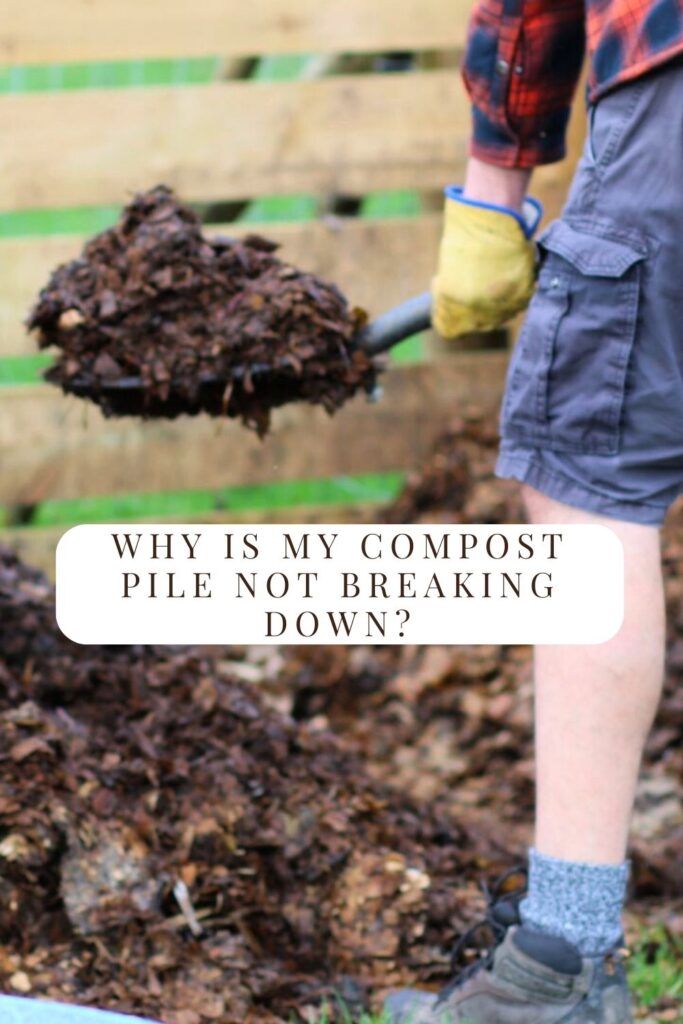
The 4 essential requirements of composting bacteria
Composting microbes need four things:
- Nitrogen
- Carbon
- Oxygen
- Water
Carbon
Composting bacteria use carbon and dead organic matter to make energy for growth and reproduction. In simple terms, the process is:
Carbon + oxygen (from the air) → carbon dioxide + energy
In fact, a compost pile can lose around a third of its volume during the composting process. Simply as a result of carbon turning into carbon dioxide and being lost into the atmosphere. And that’s why a well-managed pile shrinks as it breaks down. Composting bacteria get carbon from carbon-rich materials like:
- Straw
- Dry leaves
- Woody plant material
- Paper
- Cardboard
Which are collectively known as brown materials.
Nitrogen
Composting bacteria need nitrogen for growth and reproduction. It’s all very well for the bacteria already present in a new pile to start chomping through its contents. But what we really want is for them to multiply and colonize every nook and cranny, consuming everything in their path as quickly as possible.
The nitrogen in a compost pile comes from:
- Grass clippings
- Soft, green plant material (like fresh leaves, weeds, deadheaded flowers, spent bedding plants)
- Fruit and vegetable scraps
- Coffee grounds
- Tea leaves
- Egg shells
- Manure from cows, horses, sheep, goats, chickens, rabbits and guinea pigs (not dogs or cats)
Collectively they’re known as green materials, even though relatively few of them are actually green in color! As a general rule of thumb, putting equal quantities of brown and green materials on our compost heap results in the right ratio of carbon and nitrogen being present.
Oxygen
Composting bacteria are aerobic, meaning they need oxygen. We’ve already seen how they use carbon and oxygen to make energy. They obtain oxygen the same way we do: from the air. Without it, the bacteria will suffocate and die. Rather than becoming sterile, your compost heap will likely be colonized by anaerobic bacteria instead, which don’t need oxygen to survive. Unfortunately whilst they also digest their contents of your pile, they do so inefficiently. And they produce foul-smelling ammonia gas as they work.
You can incorporate air into your heap by:
- Including lots of bulky brown material like corrugated card, crunchy dead leaves, and small twigs, to create air pockets.
- Periodically turning the contents of your pile over into a new pile (or pulling it all out of its bay and returning it again).
- Spinning the contents of a rotary composter.
Water
Composting bacteria need moisture to grow and multiply. They are also more mobile in water, so they will spread faster through a pile that’s damp. The material in your composter or compost bay should feel like a freshly wrung-out cloth – neither dry, nor dripping wet. Too much water will start to fill the air pockets amongst your compostable materials, and reduce the amount of oxygen available.
Three more things that help a compost pile break down quickly
These factors aren’t essential for the composting process to take place, but optimizing them can speed up progress of a compost help which is breaking down frustratingly slowly.
Material size. Decomposing bacteria can only work on the surface of the materials in your compost pile. If your composter is full of big pieces of pruned plant material, chunky wood chips and whole cardboard boxes, the surface area to volume ratio is low, and the pieces will break down slowly. Making them smaller by running over them with a lawn however before adding them to your pile turns them into tasty bite-size morsels.
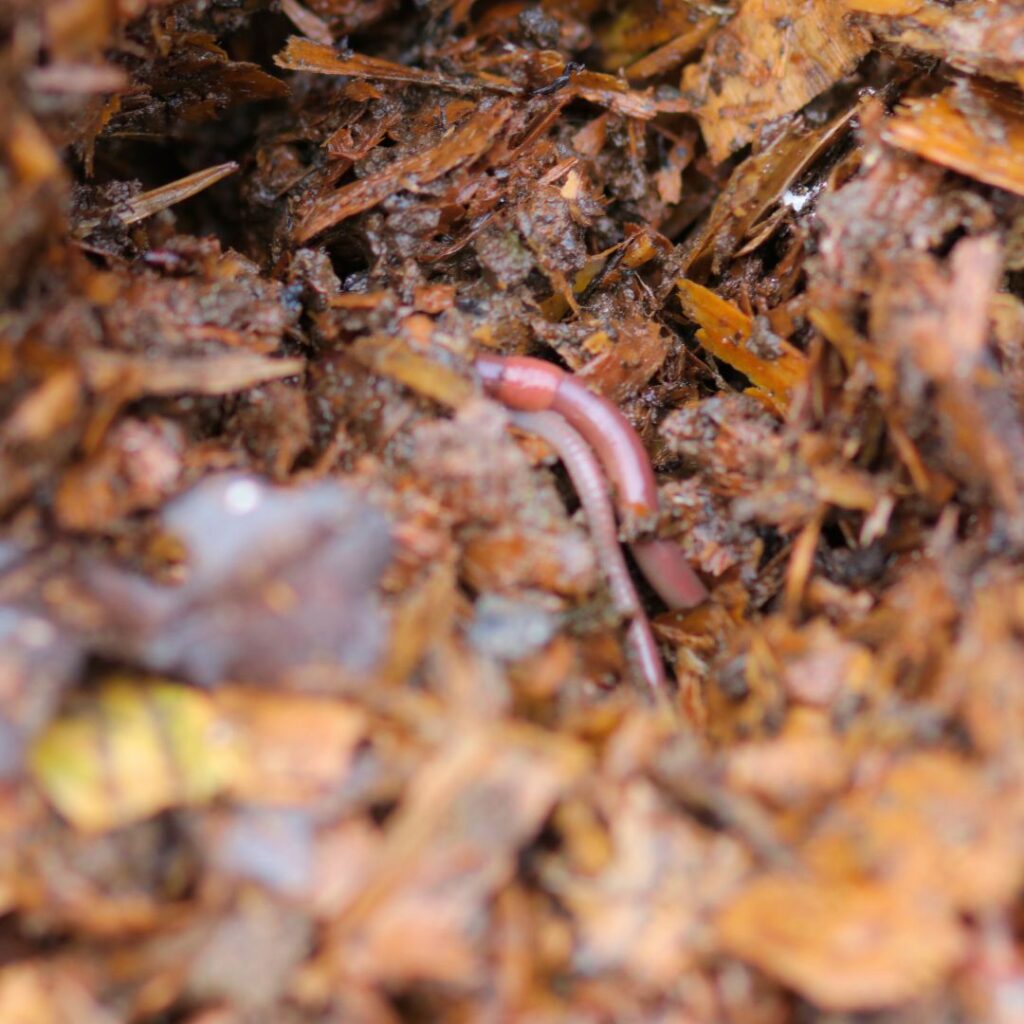
Pile volume. Hot composting relies on your compost pile having enough volume for heat to be trapped in the center and insulated by material at the edges. A small compost pile will still break down, but more slowly (cold composting).
Mixing. Mixing compost once a week or fortnight helps introduce oxygen, distribute the composting bacteria, bring brown materials into contact with green, and move non-composted materials from the edges of the pile into the center for breaking down. But if you build your pile from thin layers of green and bulky brown materials, yout pile will eventually decompose without mixing.
Reviving a cold compost pile
Whilst any one of the things above could be missing from a compost pile that isn’t breaking down, the protocol for stirring it into life again is pretty much the same for correcting all of them. And the first step is digging out your compost pile to get a look at the material in the center and at the bottom.
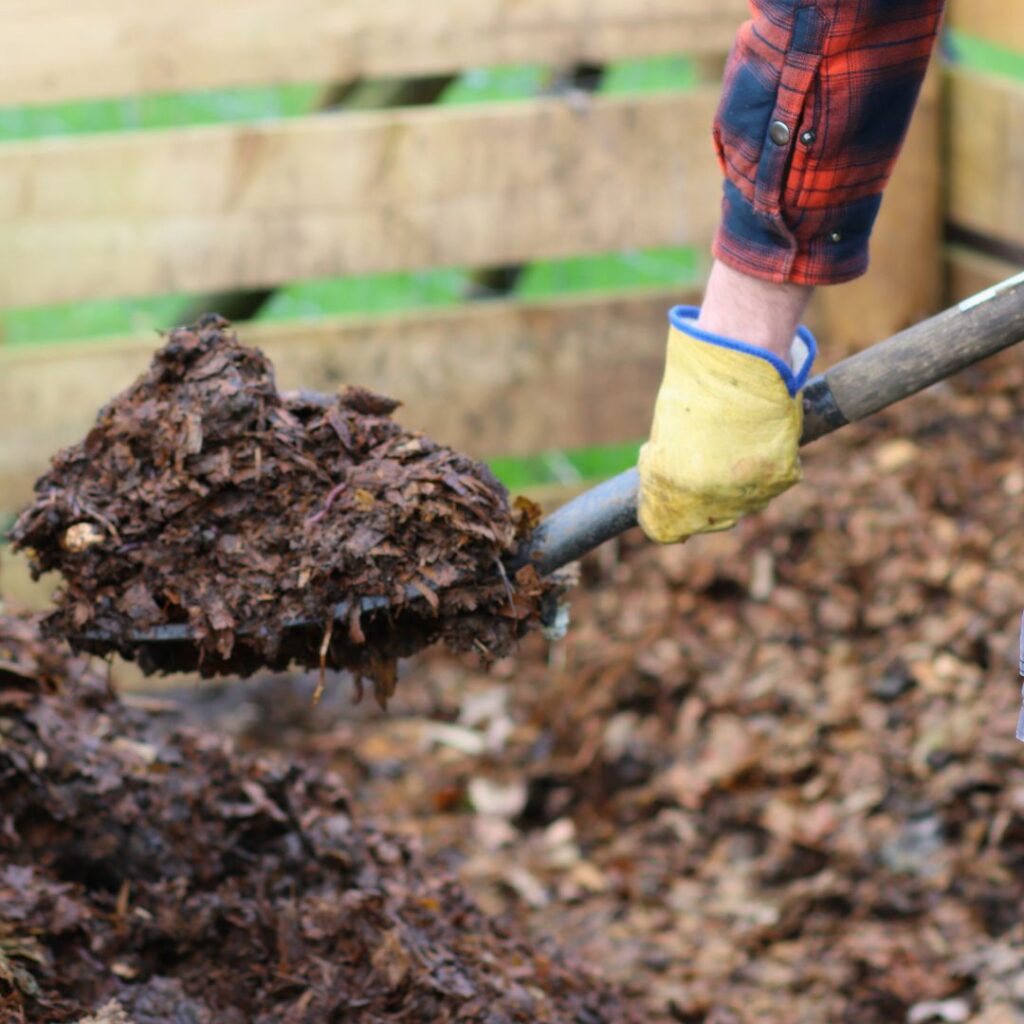
If it’s heavy, wet, compacted and smelly, then your pile contains too much water and green material. When you rebuild it, incorporate lots of dry, bulky brown materials to add carbon, soak up the excess water, and create air pockets. Consider covering your new pile during heavy rainfall to prevent it getting waterlogged.
If it’s bone dry and the contents look exactly the same as the day you added them, then it’s lacking in nitrogen and water. Green materials naturally have a relatively high water content, so adding more of them will correct both problems in most cases. Rebuild your compost pile with lots of thin layers of grass clippings and fruit and vegetable scraps incorporated into it. If your climate is very hot, and your pile isn’t big enough to avoid the interior drying out, consider watering it with a sprinkler every week or two.
Why is my compost pile not breaking down? Summary
Compost piles can fail to break down – or break down with glacial and disappointing slowness – because they are lacking in either carbon, nitrogen, oxygen, or water. But as you’ve seen, there’s more to say about the effects of those imbalances, than there is to say about fixing them. Fixing them is always pretty straightforward! Dig your pile out and re-layer its contents with either:
- More brown material, if the pile is wet and smelly
- More green material, if the pile is dry and the contents unchanged since you added it
Good luck, and happy digging!

